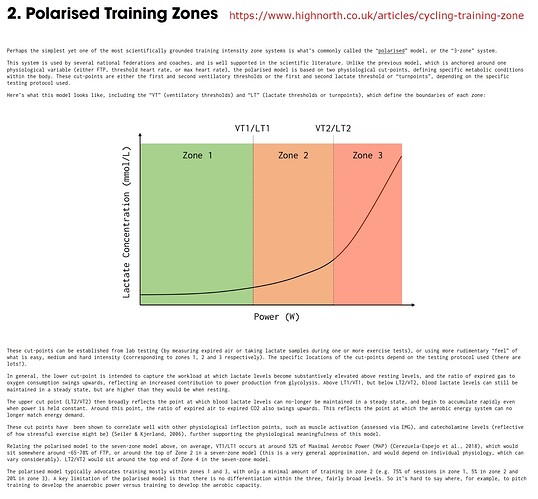That is not a stupid question. It is actually a very good one. There is no difference in power or hr zones.
What makes it confusing is that there are different zone models, and they are offered standardized, while in real life, they are not.
You got a 3-zone model, for instance. I usually work with a five-zone heart rate and a 7-zone power model. One is not better than the other.
I work with 7 power zones so that I can differentiate in training. It makes what you are doing very clear.
This is not usable in heart rate because when you are doing power zone 5,6, or 7 intervals, the heart rate can’t follow. Most of the time, you will reach the desired heart rate after the interval is over.
It confuses athletes, and I have seen that they will adapt the training by starting the interval too early or prolonging the interval so they are in the heart rate zone for as long as they should be.
I always tell them to forget their heart rate during training when they are doing short, high-intensity intervals.
The standardisation makes it confusing too. Athletes are offered a heart rate zone model, based on standardized zones of 10%, for instance. It gives you a reasonable estimate based on your max heart rate or your heart rate reserve.
In real life, these zones are very fluid. A rider that neglects his zone 2 training can have a small zone 2 and a bigger zone 3. In your case, you have a bigger zone 2.
Testing is important and the best way to establish these zones. But even with testing it I not 100% clear where your zones are. If your nutrition and sleep wasn’t up to par during the week before testday, you might have a worse result than you are actually capable of.
On the other hand, if you did everything right to be the best before your test-day, doing things that are not realistically possible in real life, you’d get a better result than you can live up to.
Finally, and that’s what I love about your approach: not every test is the same. Every test has its benefits and downsides. So, doing different tests to test various aspects of your performance is an excellent way to understand your capabilities.
Because what matters in the end is that you are an individual and you need to understand what your body is capable of, creating a unique approach for your life and body.
Like Joe Friel says: Endurance sports is a life-long science with only one subject: you.
Keep going like this and you will get there.
![]() I really am telling you, I literally had 0% or like .2% some days…, that was when doing a hard zone 2 focus for years. So if all you care about is an aerobic test this is fine. If you actually wanted to find AeT and do true below AeT training then I would say this is still too hard…
I really am telling you, I literally had 0% or like .2% some days…, that was when doing a hard zone 2 focus for years. So if all you care about is an aerobic test this is fine. If you actually wanted to find AeT and do true below AeT training then I would say this is still too hard…
